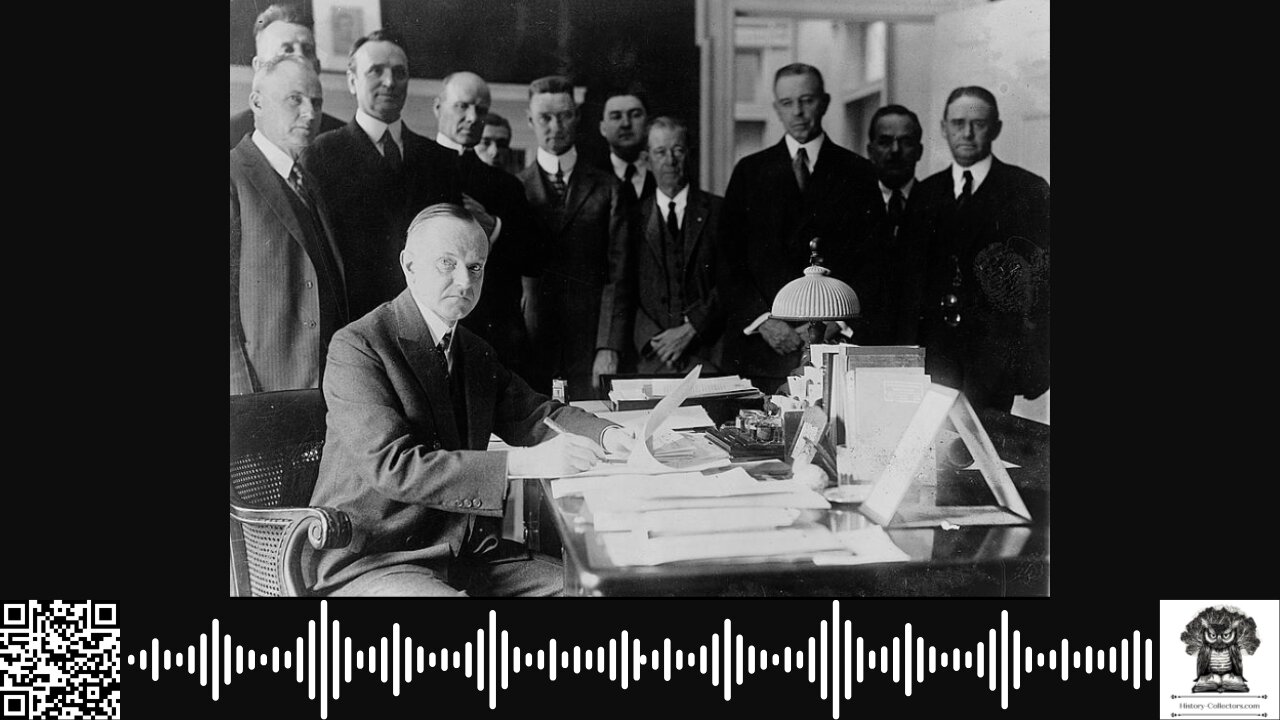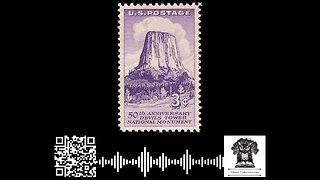Premium Only Content

#OnThisDate February 13, 1929: The Cruiser Act
https://history-collectors.com/ | Own A Piece Of History
President Calvin Coolidge Signed The Cruiser Act Into Law, Authorizing The Construction Of 15 Cruisers And One Aircraft Carrier. This Legislation Marked A Significant Shift In American Naval Policy During The Interwar Period. The Act Aimed To Modernize The U.S. Navy's Fleet, Ensuring Its Readiness Amidst Evolving Global Naval Dynamics.
The Washington Naval Treaty Of 1922 Imposed Limitations On Naval Armaments Among Major Powers, Including The United States, Great Britain, Japan, France, And Italy. While The Treaty Restricted Battleship Construction, It Allowed For Cruiser Development Within Specified Tonnage Limits. This Led To A Competitive Focus On Cruiser Construction, As Nations Sought To Enhance Their Naval Capabilities Within Treaty Constraints. The Geneva Naval Conference Of 1927 Attempted To Address Disparities In Cruiser Classifications And Limitations But Ended Without A Consensus. The Failure To Reach An Agreement Highlighted The Need For The United States To Bolster Its Cruiser Fleet To Maintain Parity With Other Naval Powers.
The Cruiser Act Authorized The Construction Of 15 Cruisers And One Aircraft Carrier, To Be Initiated Over Three Fiscal Years, With Five Cruisers Planned For Each Year. The Act Specified That These Vessels Should Adhere To The Limitations Set By Existing Naval Treaties, Particularly Concerning Tonnage And Armament.
Among The Cruisers Authorized, The Portland-Class Vessels, Including USS Portland (CA-33) And USS Indianapolis (CA-35), Were Notable. These Ships Were Designed With Enhanced Armor And Armament Compared To Their Predecessors. USS Portland Was Laid Down On February 17, 1930, At The Bethlehem Steel Company’s Fore River Shipyard In Quincy, Massachusetts, And Commissioned On February 23, 1933. USS Indianapolis Was Laid Down On March 31, 1930, By The New York Shipbuilding Corporation In Camden, New Jersey, And Commissioned On November 15, 1932.
The Authorized Aircraft Carrier, USS Ranger (CV-4), Was The First U.S. Carrier Designed And Built As Such From The Keel Up. Laid Down On September 26, 1931, At Newport News Shipbuilding In Virginia, And Commissioned On June 4, 1934, Ranger Represented A Significant Advancement In Naval Aviation Capabilities.
The Cruiser Act Of 1929 Played A Crucial Role In Modernizing The U.S. Navy During A Period Of Technological Advancements And Shifting Geopolitical Landscapes. By Expanding And Updating The Cruiser Fleet And Introducing A Purpose-Built Aircraft Carrier, The Act Ensured That The United States Maintained A Formidable Naval Presence. This Preparedness Was Instrumental In The Navy's Effectiveness During World War II, Where These Vessels Participated In Key Operations Across Various Theaters.
The Signing Of The Cruiser Act By President Coolidge On February 13, 1929, Was A Pivotal Moment In American Naval History. It Underscored The Nation's Commitment To Maintaining Naval Parity And Readiness In An Era Marked By Rapid Technological Change And International Naval Competition. The Ships Commissioned Under This Act Not Only Enhanced The U.S. Navy's Capabilities But Also Played Significant Roles In The Ensuing Global Conflict.
--------------------------------------------------------------------------------------------
Whether You're Commuting, Working Out, Or Just Relaxing, These Recordings Give You The Freedom To Absorb Knowledge At Your Own Pace, Wherever You Are.
Tune In To Focus Deeply On The Content Without Visual Distractions, And Easily Control Playback To Review Complex Topics As Needed.
Perfect For Auditory Learners Or Anyone Looking To Maximize Their Time — Click Play All To Listen Now And Transform Your Time Into A Productive Learning Session!
For Enthusiasts Of Historical Ephemera, Visit History-Collectors.com To Find Collectibles That Might Complement Your Collection.
You Can Own A Piece Of History.
Before You Go, A Simple Way To Support The Efforts Of This Channel Is To Like, Subscribe, Comment And Share.
-
 5:42
5:42
History-Collectors.com
12 hours ago#OnThisDay September 24, 1906: Sacred Stone
-
 7:07
7:07
Colion Noir
12 hours agoCalifornia Just Banned All Glocks
28.6K30 -

Adam Does Movies
5 hours agoTalking Movies + Ask Me Anything - LIVE
18.3K1 -

Jamie Kennedy
3 hours agoChoosing Good in a World Gone Dark | Ep 223 HTBITY with Jamie Kennedy
17.8K4 -
 LIVE
LIVE
SpartakusLIVE
7 hours ago#1 Challenge CHAMPION of WZ || Ridin' The GRAVY Train w/ GloryJean
409 watching -

The Pascal Show
2 hours ago $0.56 earnedDISTURBING UPDATES! New Developments In The D4vd Celeste Case... Possible Celeste Sighting?!
21.2K2 -
 2:03:18
2:03:18
The Charlie Kirk Show
5 hours agoTPUSA Presents This is The Turning Point Tour LIVE with Megyn Kelly and Governor Glenn Youngkin!!
220K63 -
 1:37:35
1:37:35
Badlands Media
21 hours agoAltered State S3 Ep. 47: Epstein, DOJ Whistleblowers, and Trump’s Tightrope
43.4K3 -
 LIVE
LIVE
putther
4 hours ago $0.81 earned⭐ Bounty Hunting on GTA⭐
61 watching -
 58:58
58:58
MattMorseTV
5 hours ago $0.49 earned🔴This NEW INFO changes EVERYTHING.🔴
30.6K53